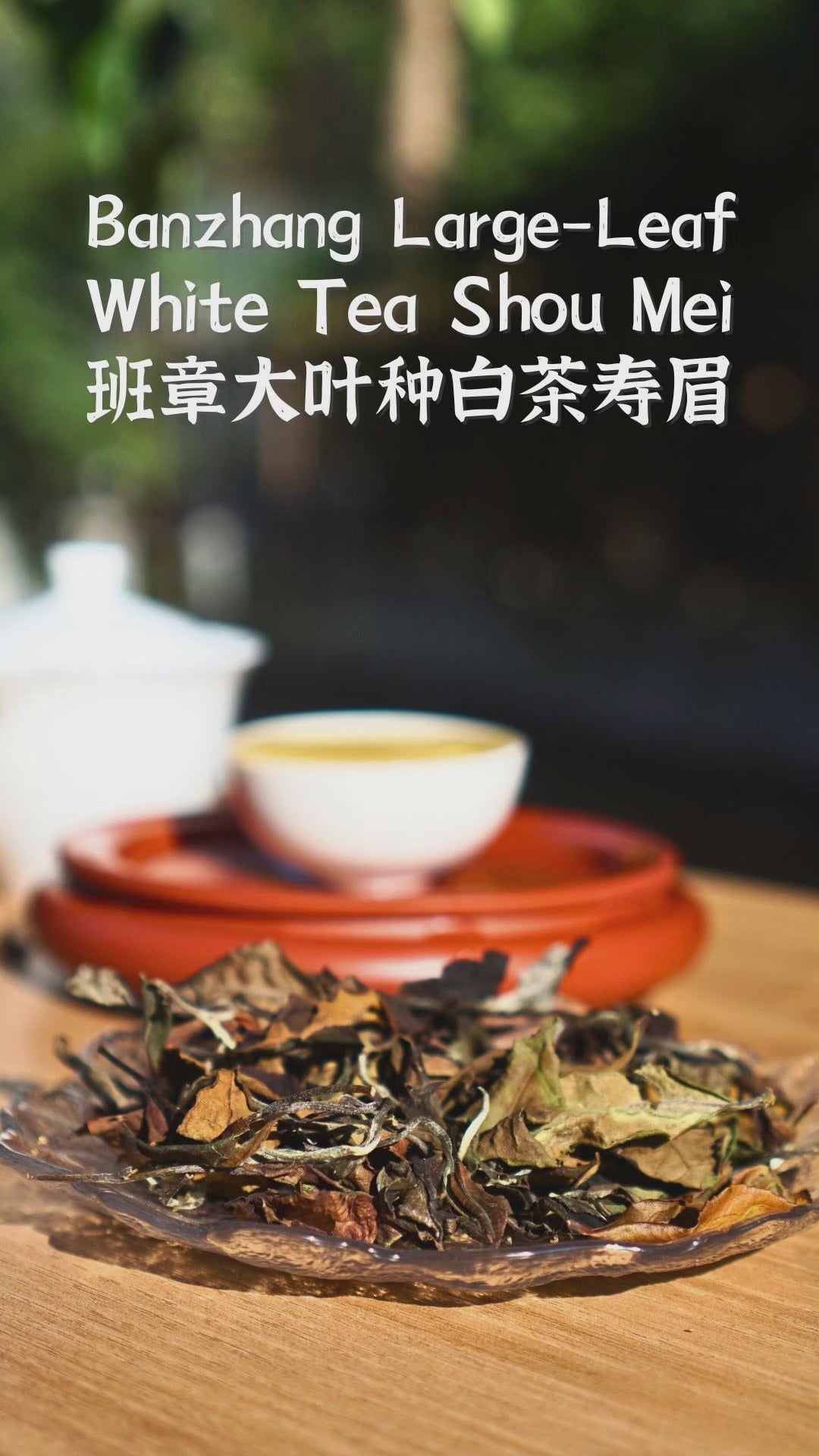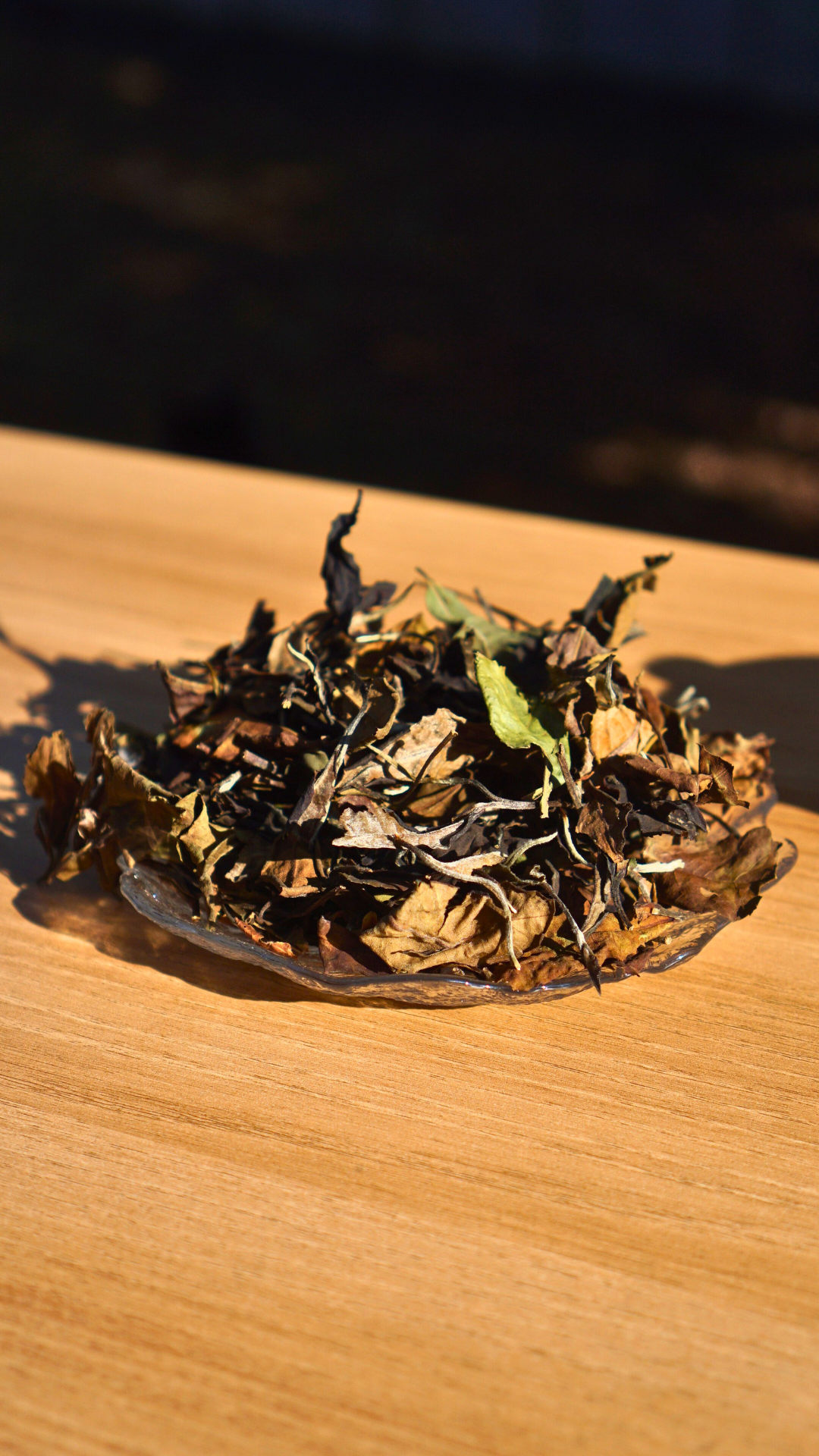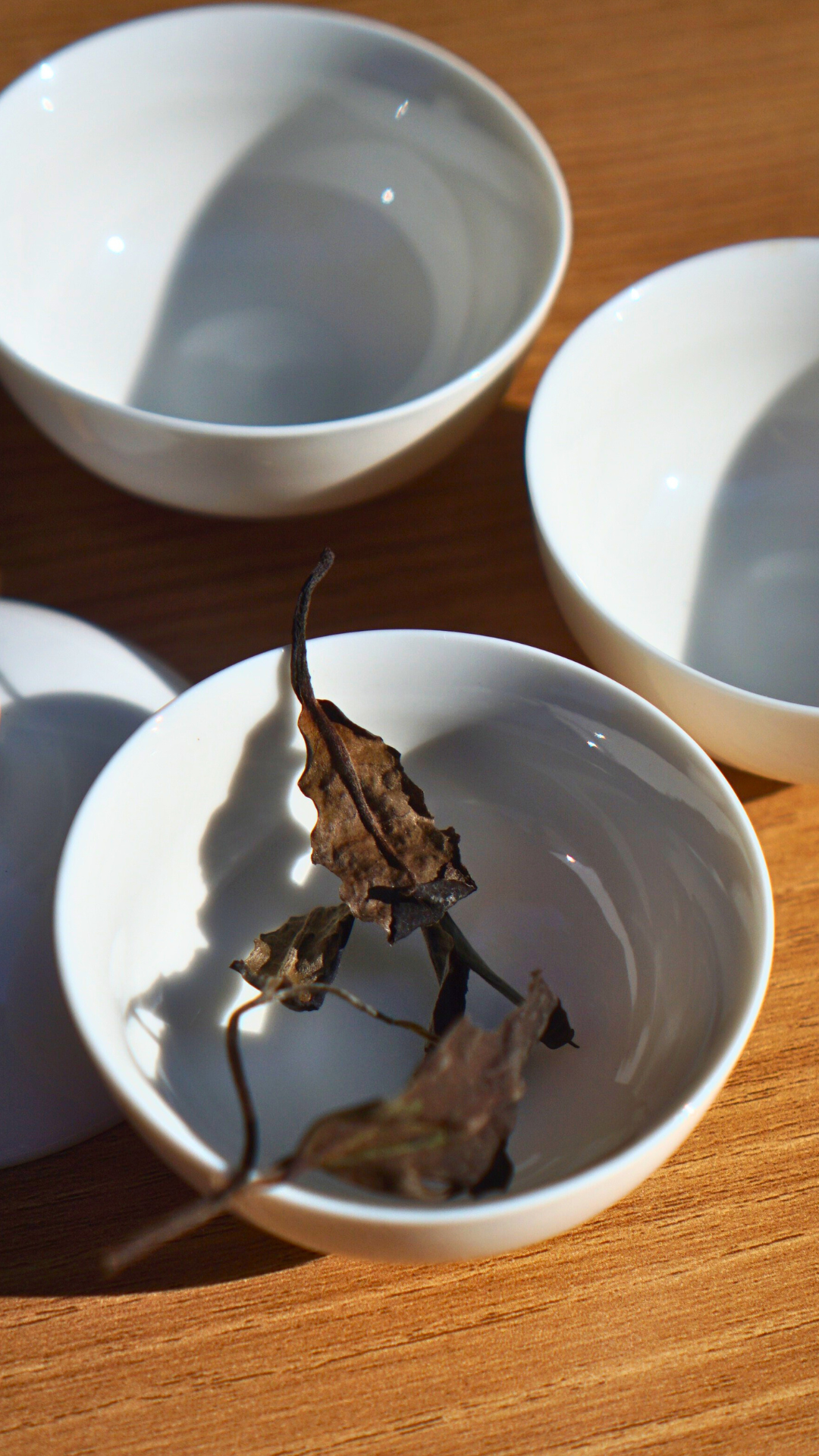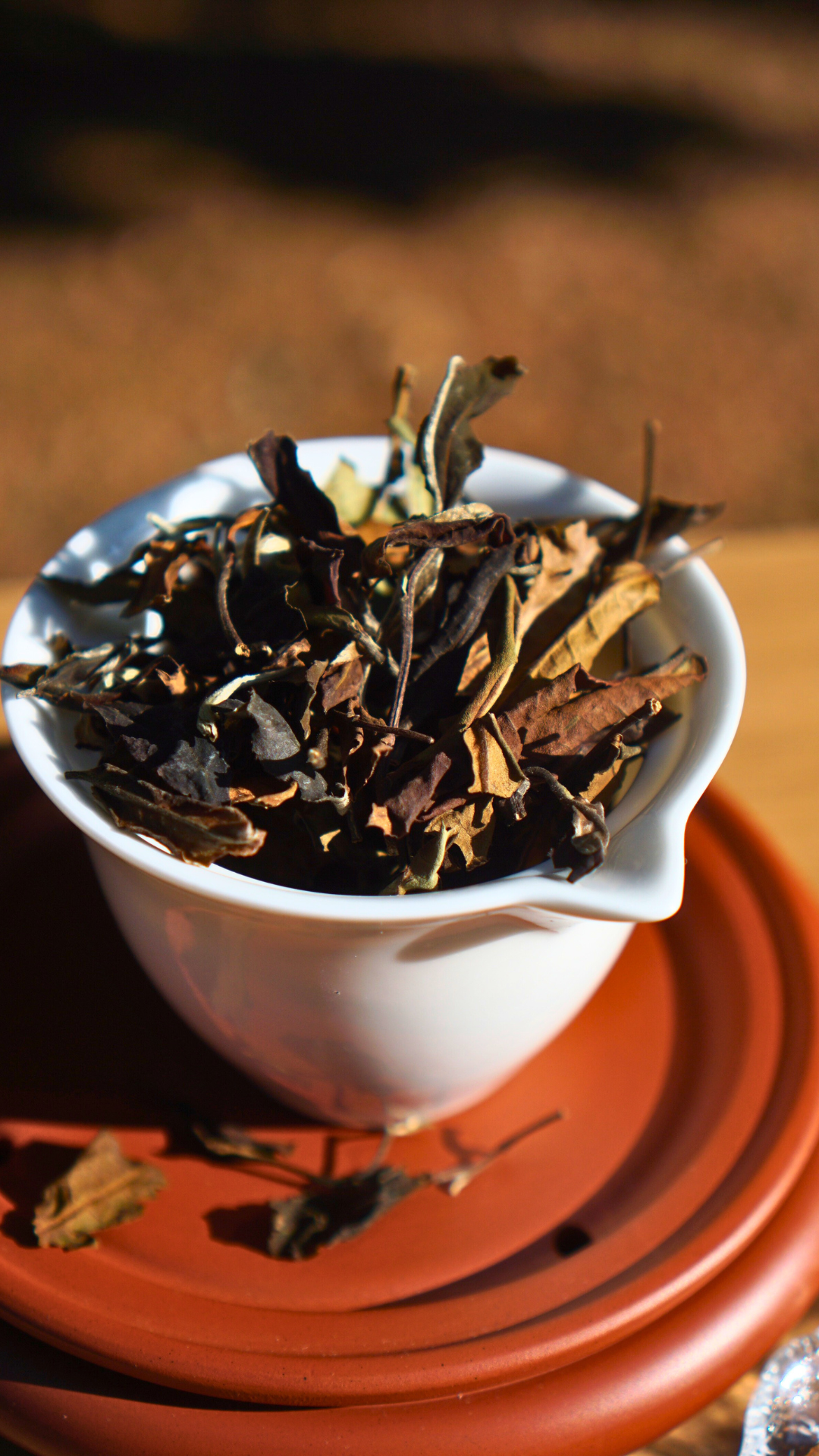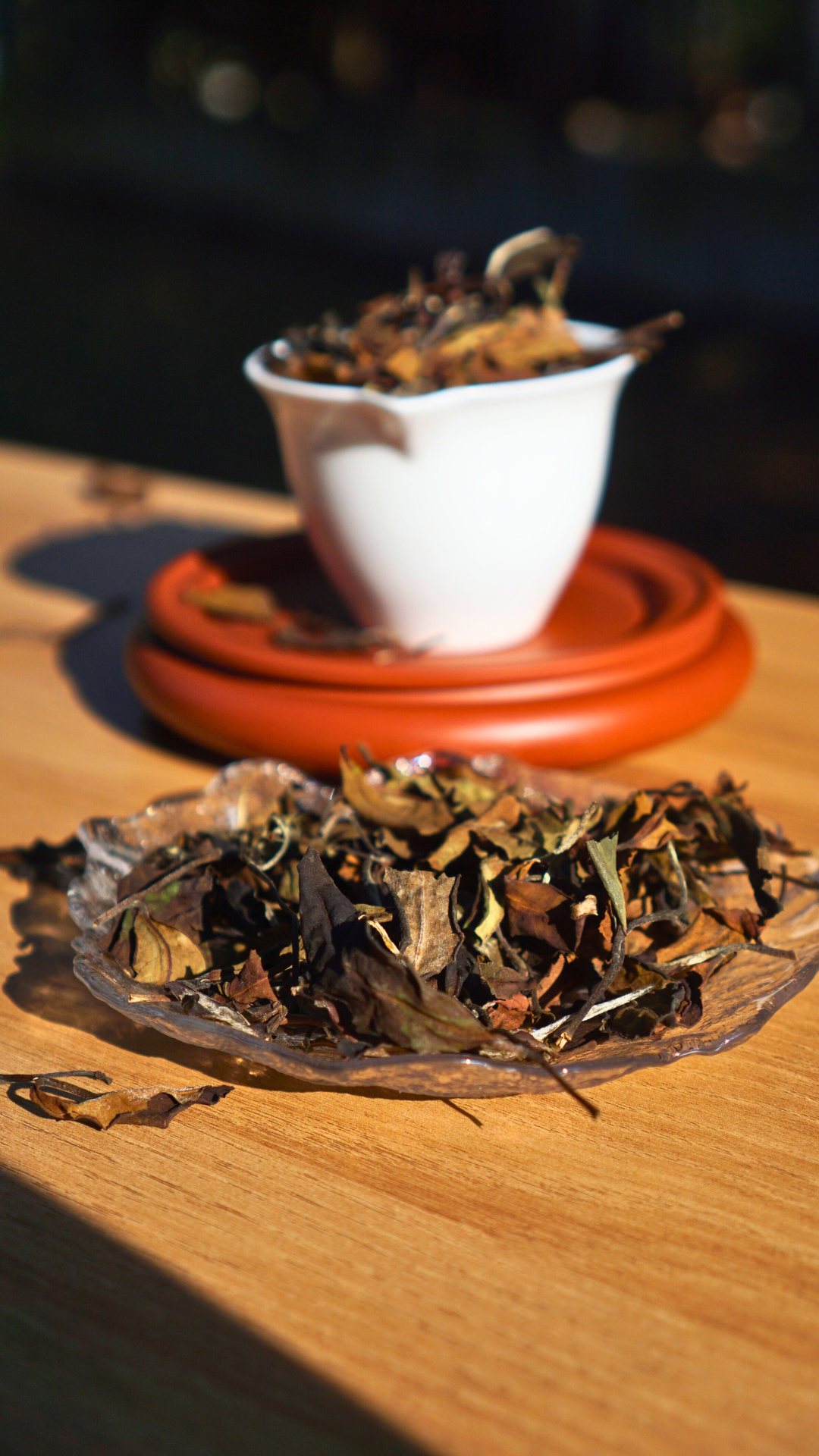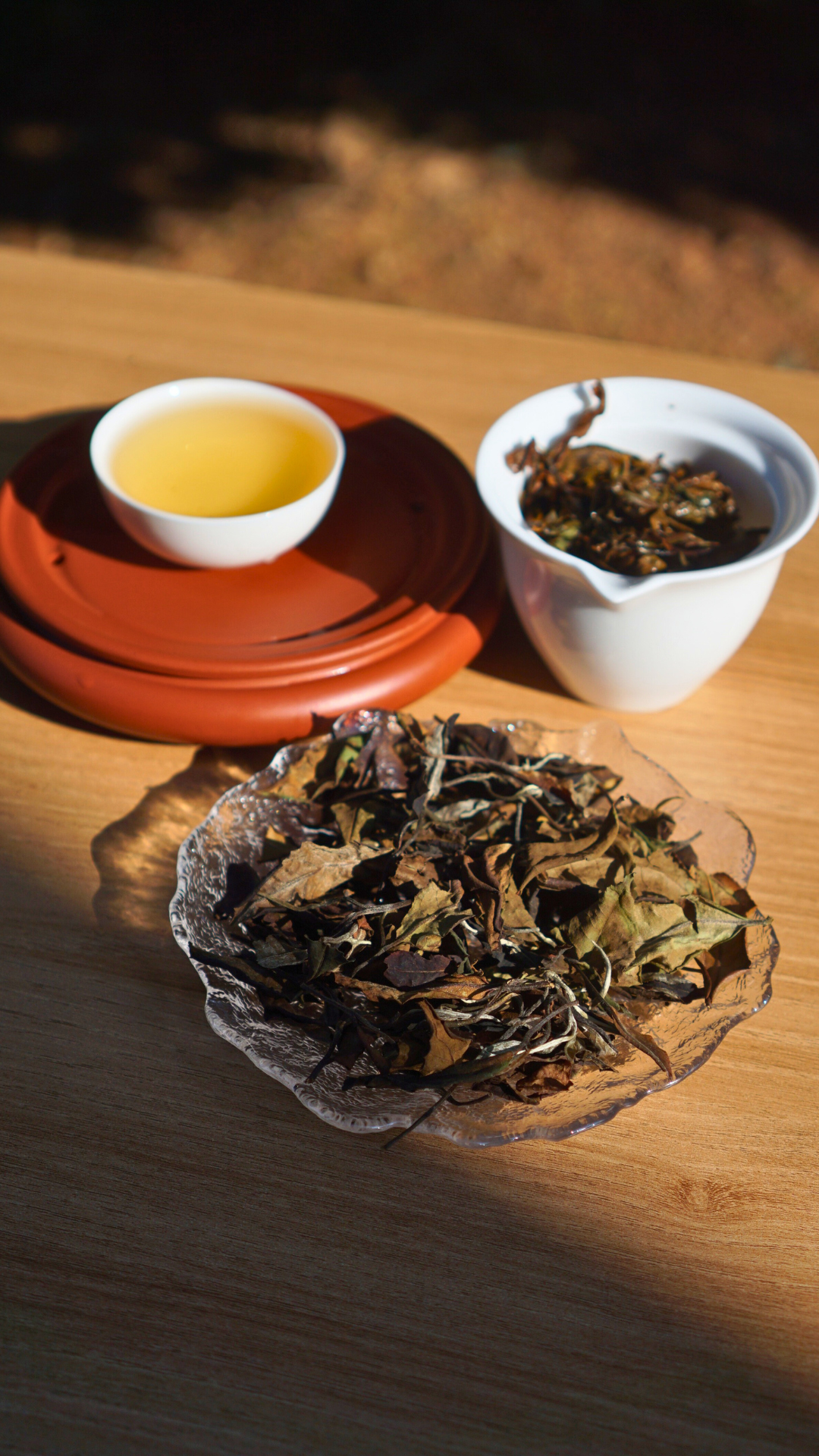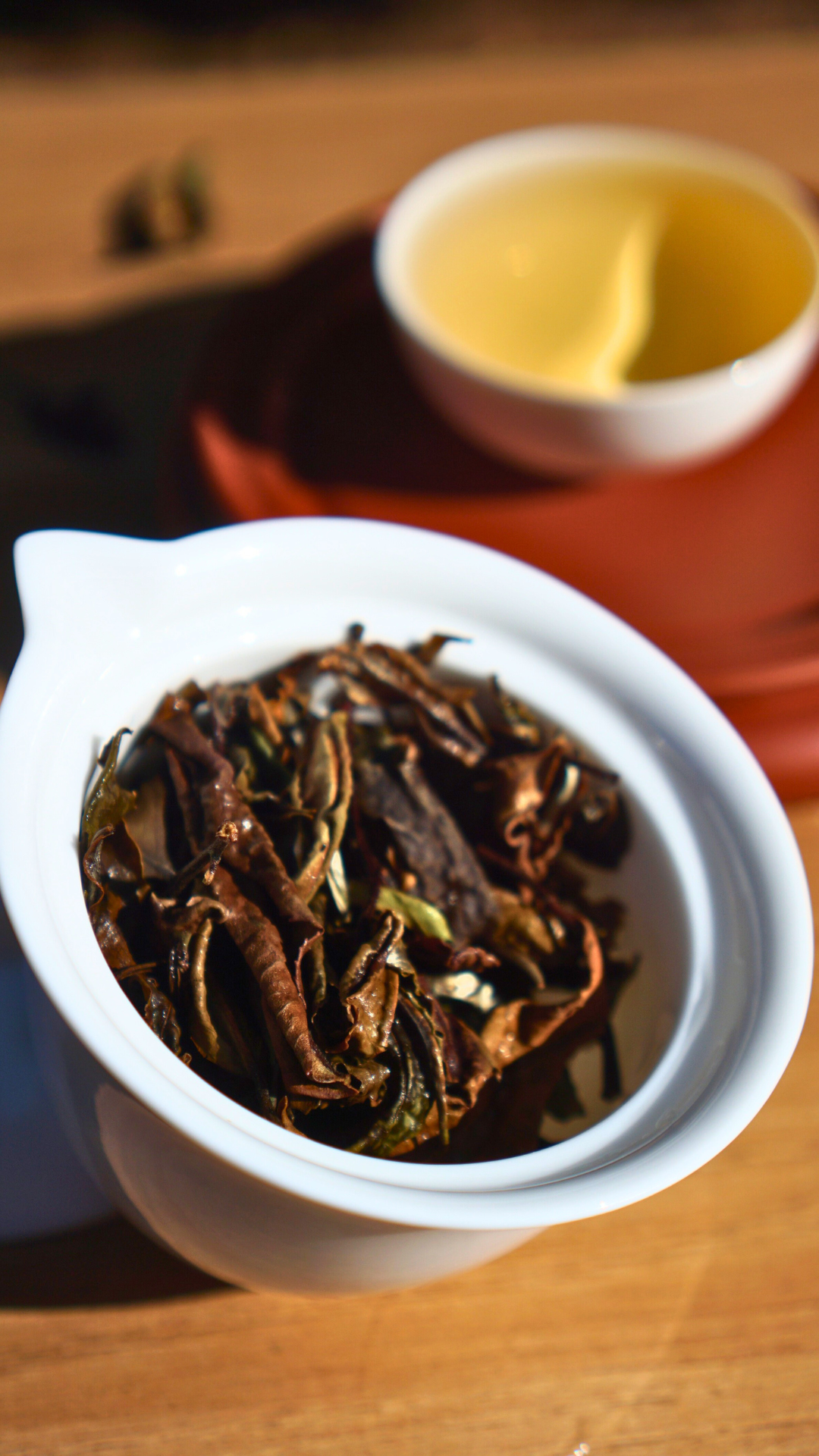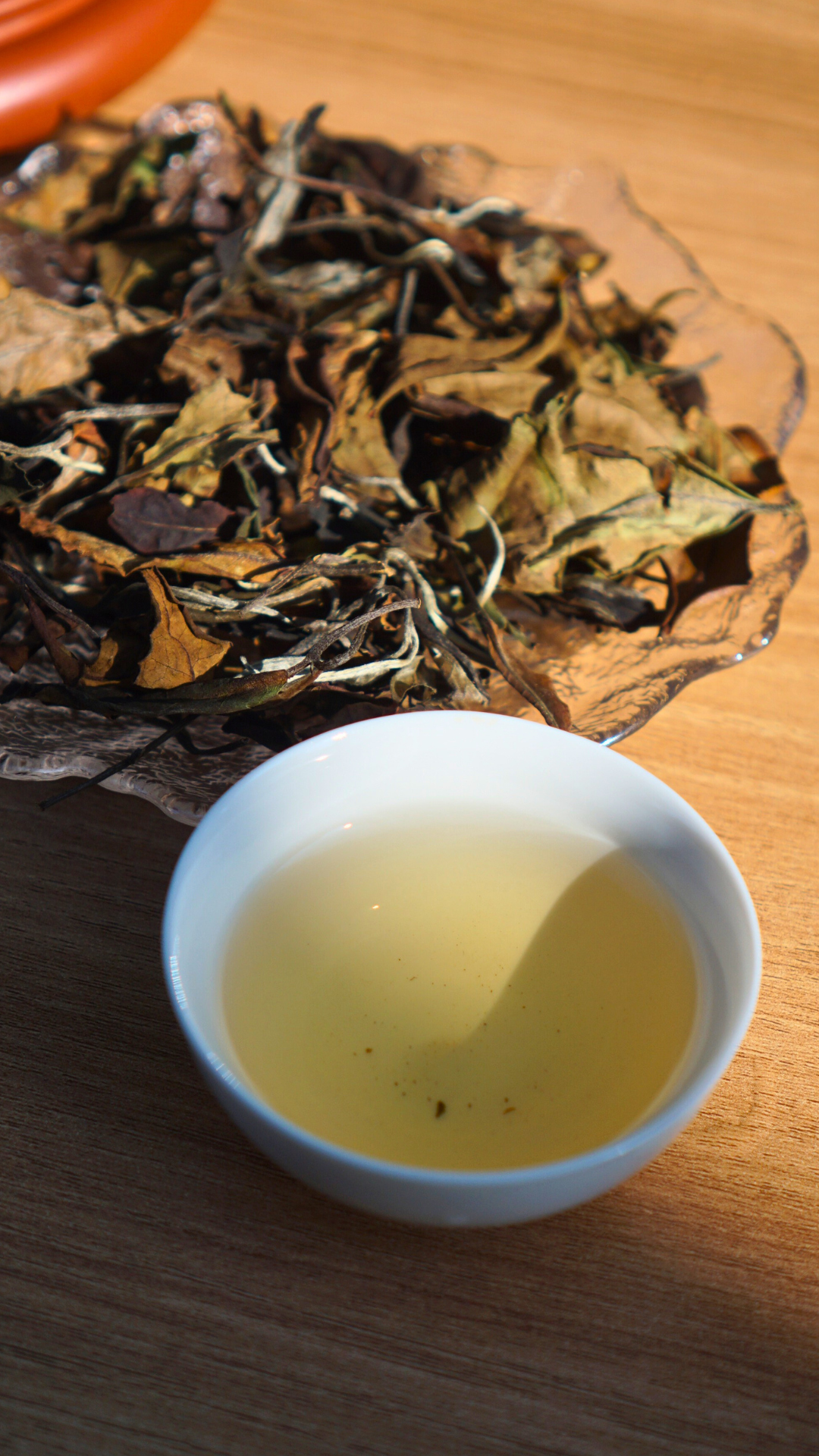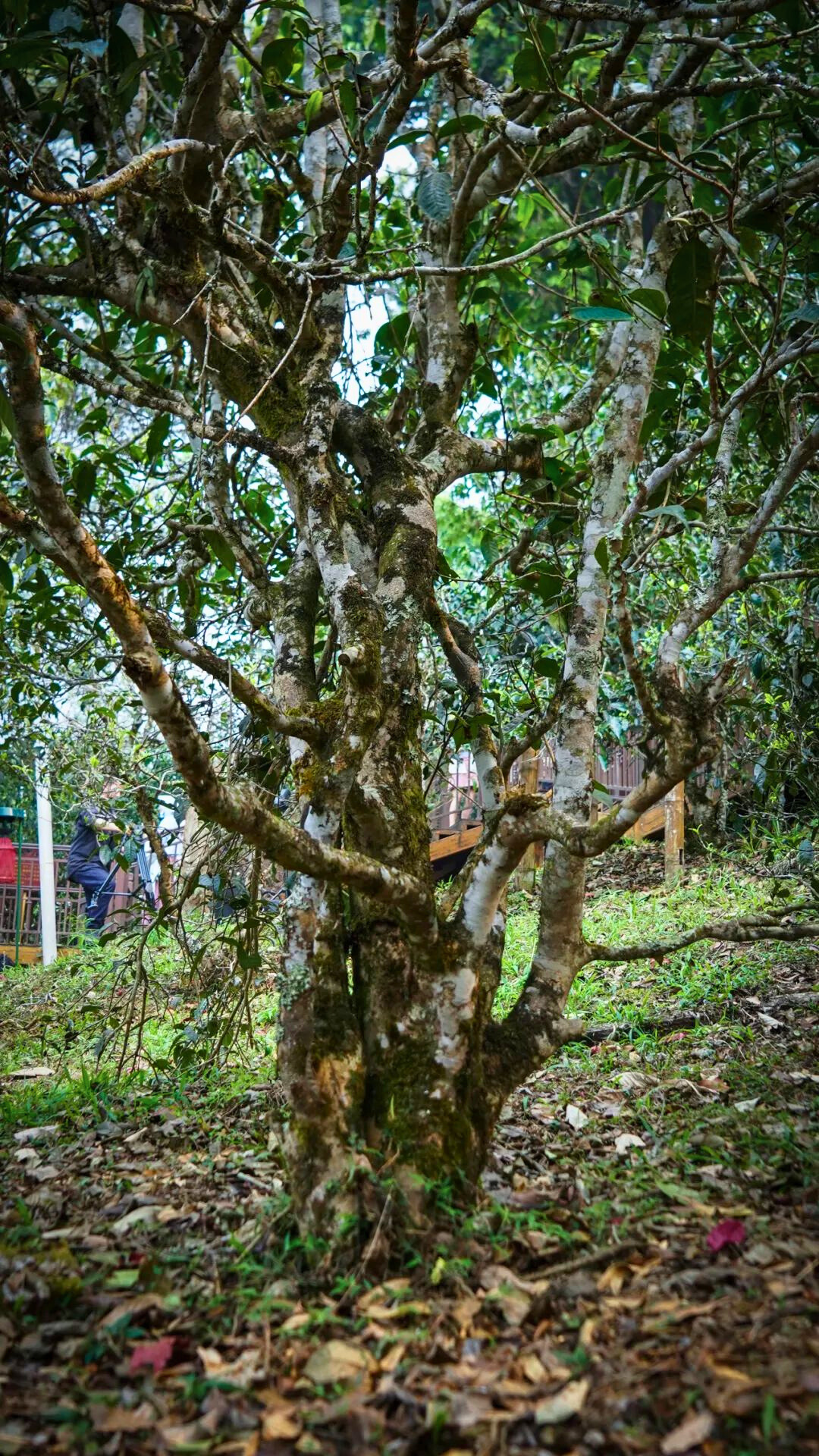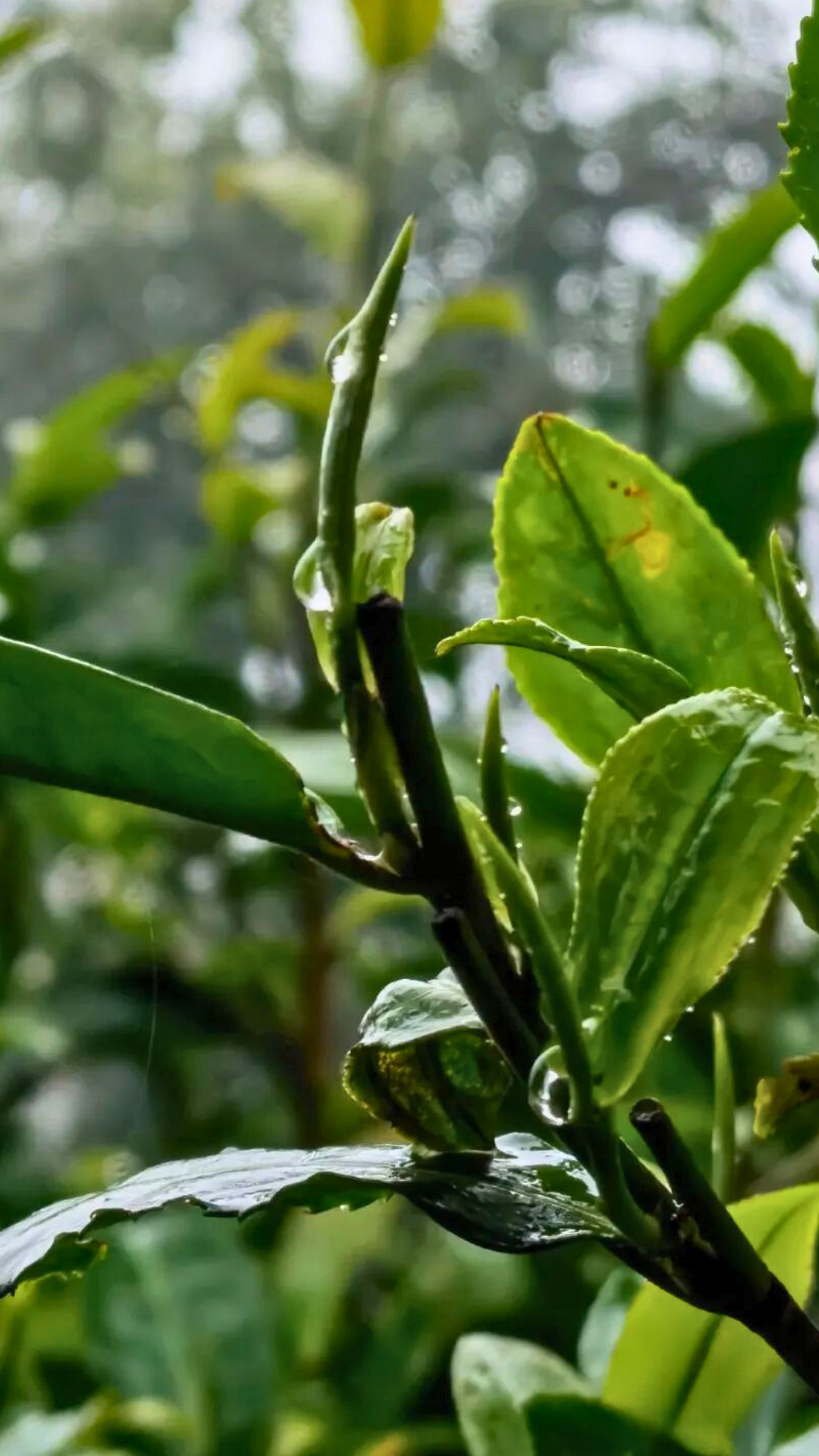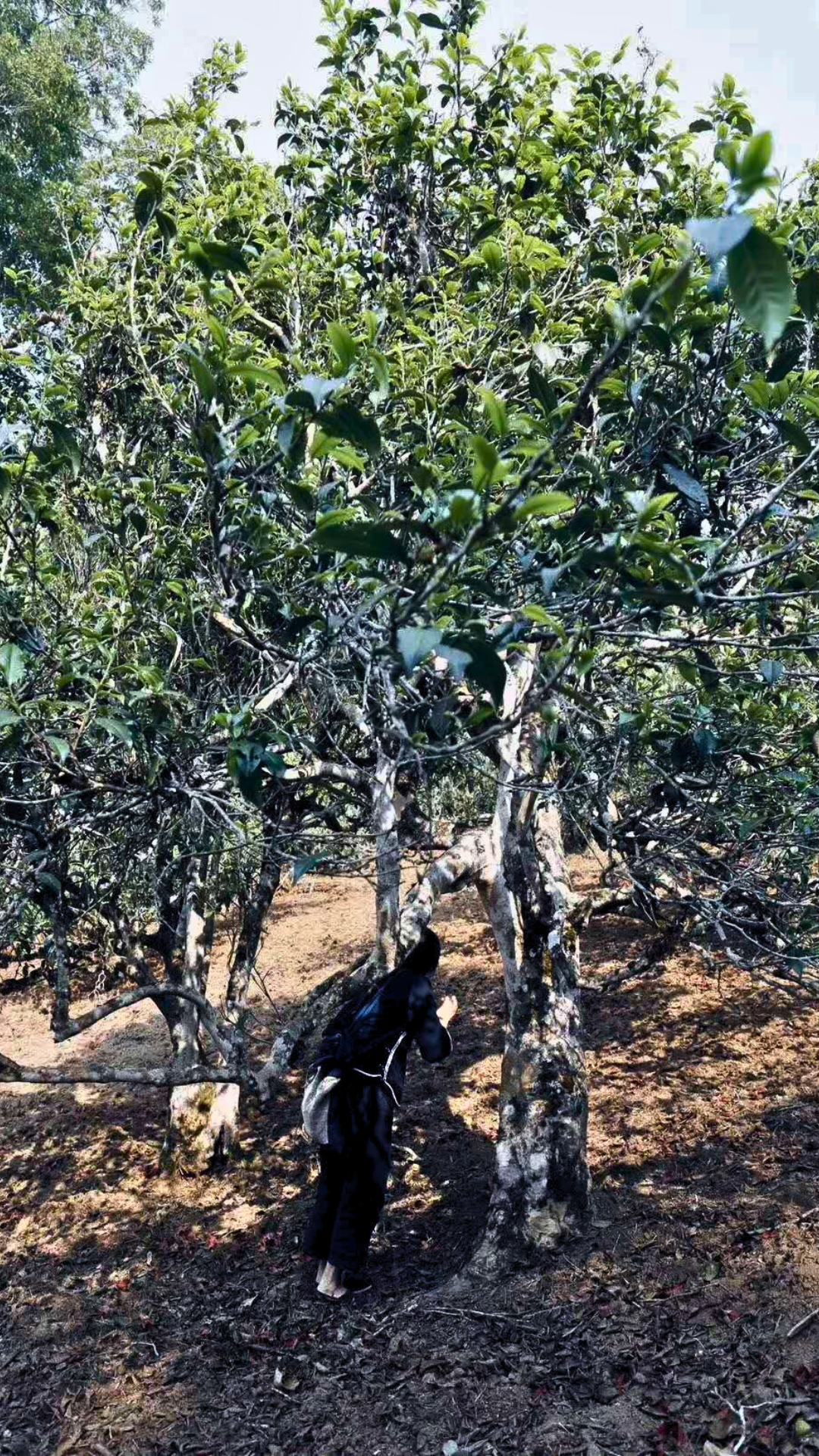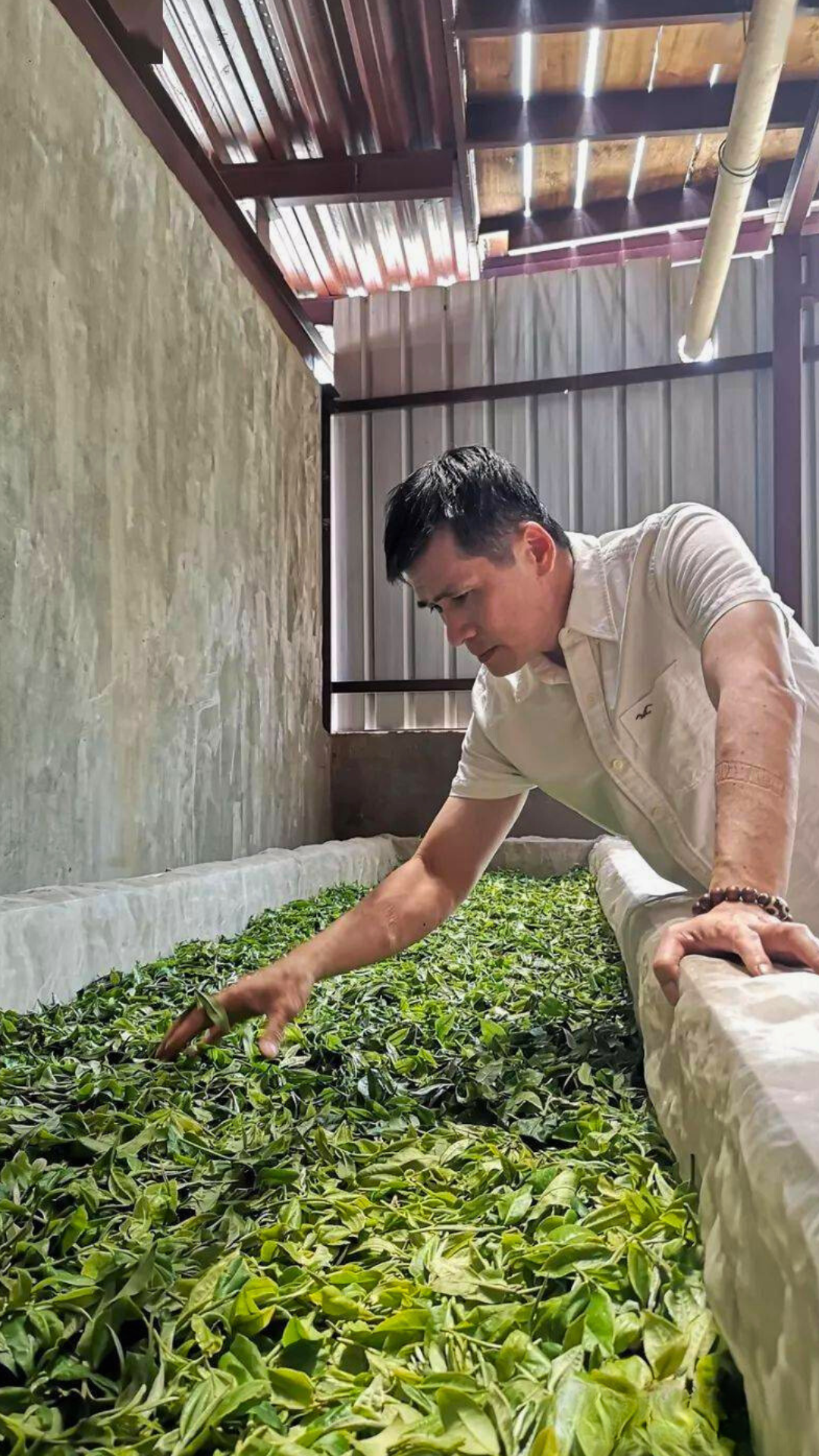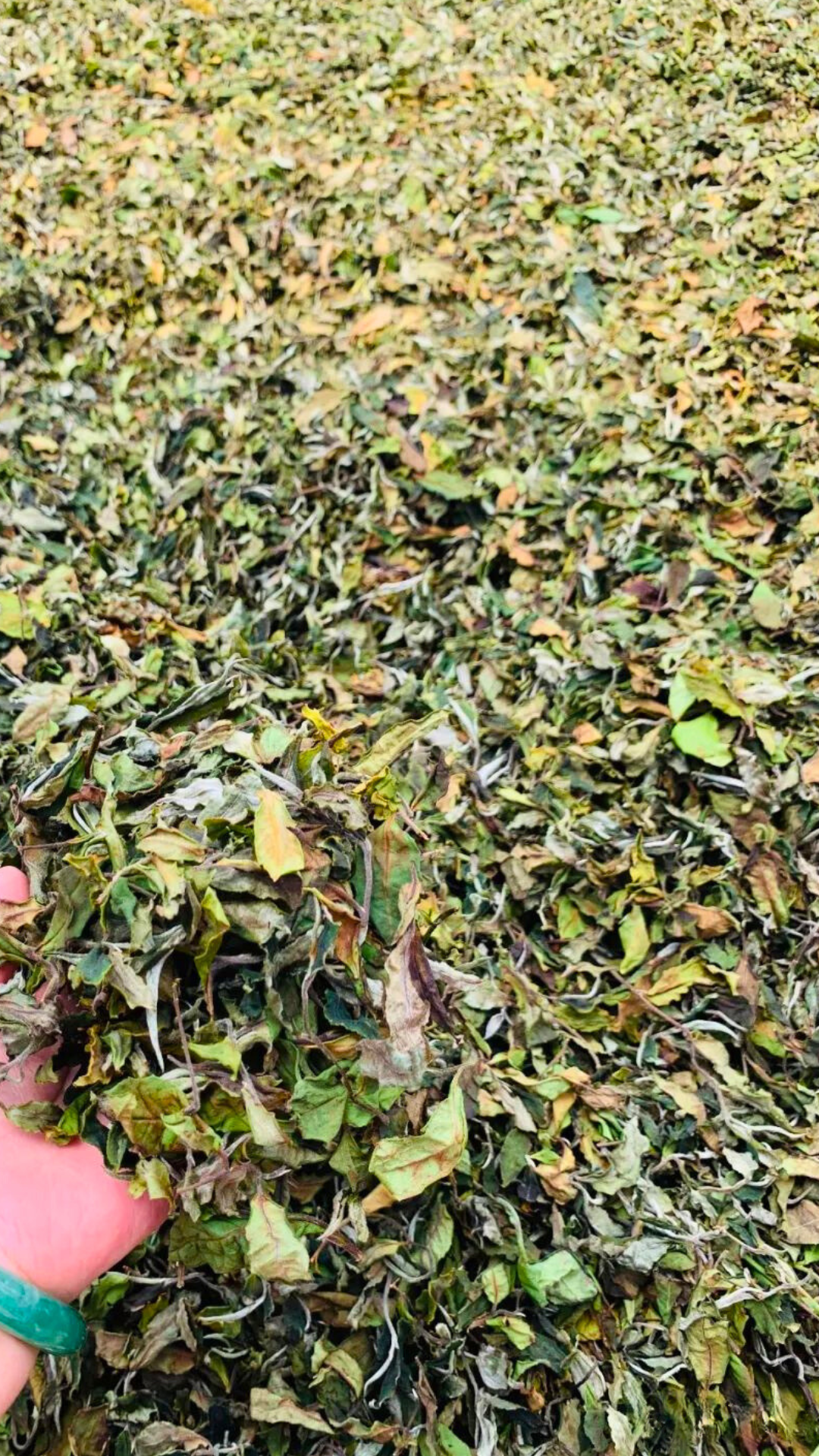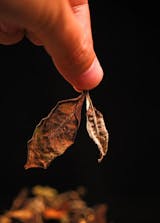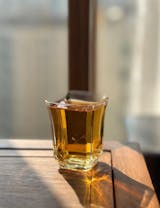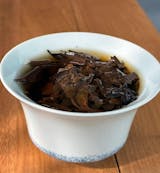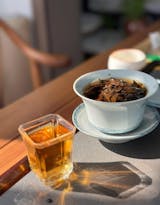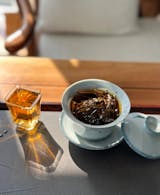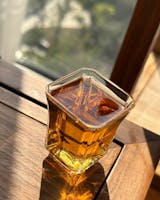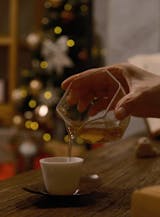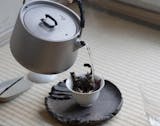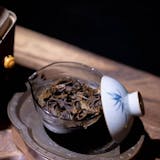Banzhang Large-Leaf White Tea Shou Mei
Banzhang Large-Leaf White Tea Shou Mei
班章大叶种白茶寿眉
This large-leaf white tea is harvested from old tea trees in the Banzhang(班章) area of Bulang Mountain(布朗山) in Menghai(勐海), at an altitude of approximately 1,600 meters. The picking standard involves one bud with two or three leaves. It is processed using traditional white tea techniques combined with additional withering methods, without deactivation of enzymes, frying, or kneading. Due to the simplicity of white tea processing, which does not break the cell walls of the tea leaves, the release of active substances like caffeine and tea polyphenols is slower, resulting in almost no bitterness or astringency. Even when brewed for an extended time or boiled, it doesn’t become bitter or astringent. This is a key distinction between large-leaf white tea and raw Pu-erh tea made from the same kind of large-leaf fresh leaves.
Menghai large-leaf (勐海大叶种)ancient tea trees have deep root systems and leaves rich in nutrients. White tea made from their fresh leaves is more durable for steeping compared to regular white tea. This large-leaf Shou Mei can generally withstand over 10 infusions and can be boiled for 3–5 more brews, still delivering full-bodied flavor and abundant floral aroma, making it highly drinkable.
The dry tea of this large-leaf white tea Shou Mei features long tea stems, thick leaves with a prominent leathery texture on the surface, clearly visible veins, irregular serrated edges, and white fuzzy tips on the buds.
The tea liquor is bright orange-yellow, crystal clear, with golden rims on the cup—a stunning appearance that gives an excellent first impression even before drinking.
This tea is rich in internal quality, containing abundant theanine, with moderate levels of tea polyphenols and caffeine. The resulting tea soup is fragrant, sweet, mild, and mellow, without being heavy or overly strong. It’s free from bitterness or astringency, embodying the quintessential qualities of white tea. Upon tasting, apart from its sweet clarity, you’ll notice its tea fragrance—a rich floral and honey aroma that is refreshing and pleasant.
There is a saying among tea enthusiasts: "White tea is tea for one year, medicine for three years, and a treasure for seven years.” Local villagers almost always keep a big ceramic jar of aged white tea at home. When they catch a cold or have stomach discomfort, they grab a handful of aged white tea, boil a strong brew in a kettle, sweat it out, and the symptoms are relieved.
Beyond its medicinal value, white tea can see its quality significantly improve through proper storage. The storage value of white tea is determined by its aging (mellowing) process during storage. During storage, polyphenol oxidase in white tea gradually reacts with tea polyphenols to form new compounds, while also undergoing polymerization reactions with other internal substances in the tea, enhancing its quality.
The production process of white tea—without frying or kneading—ensures that many active substances (like polyphenol oxidase) are retained, providing essential conditions for the tea to mellow over time. The amount of tea polyphenols and other inherent substances present significantly influences the outcome of the tea’s aging process. In other words, the more polyphenol oxidase and tea polyphenols are preserved, the faster and better the tea will age during storage.
White tea made from Yunnan large-leaf varieties contains much higher levels of tea polyphenols than those from traditional regions, offering a better material foundation for post-storage aging. Practice and experience have shown that Yunnan white tea mellows (transforms) more quickly and to a greater degree during storage.
Picking and Processing
Picking and Processing

The production process of white tea generally consists of two steps: withering and drying, with withering being the key stage.
Withering can be divided into indoor natural withering, mixed withering, and heated withering. It must be flexibly adapted to the climate, and for sunny spring and autumn days or clear summer days without oppressive heat, indoor withering or mixed withering is preferred.
The refining process involves removing stems, flakes, wax leaves, red leaves, and dark leaves, then baking over a gentle heat until sufficiently dry. This enhances the tea’s aroma with a subtle roasted scent. When the moisture content reaches 4%–5%, the tea is packed while still warm. The hallmark of white tea processing is that it neither destroys enzyme activity nor promotes oxidation, instead allowing for mild natural oxidation while maintaining the delicate aroma of the tea buds and a fresh and brisk flavor in the brew.

- Picking
White tea is picked when temperatures allow for tender, fresh leaves with one bud and one unfolding leaf in a jade white color. The process involves picking early, picking tender leaves, picking frequently, and ensuring clean picking. Buds and leaves must be uniform in size and shape, and the stems kept short. The tea is handled gently during harvesting, placed lightly in bamboo baskets, and transported in bamboo containers.

- Withering
Freshly picked leaves are spread evenly on bamboo trays in a thin layer and should not be disturbed. After spreading, the type of withering—indoor natural withering, mixed withering, or heated withering—is chosen based on the climate conditions and leaf grade. When the leaves are 70%–80% dry, both indoor natural withering and mixed withering require sieving.

- Drying
Initial drying: Dryer temperature at 100–120℃ for 10 minutes. Cooling: Spread and cool for 15 minutes. Re-drying: Dryer temperature lowered to 80–90℃, with low-temperature long drying at around 70℃.

- Storage
Dried tea leaves should have a moisture content of 5% or less and be stored at room temperature.
Brewing
Brewing
The brewing methods for new white tea, such as Baihao Yinzhen(silver needle downy tips) and Bai Mudan(white peony), are basically the same as those for green tea. However, since white tea is not rolled, the tea juices are not easily extracted, so the steeping time should be relatively longer.

Generally, 3–5 grams of white tea can be placed in a colorless, transparent glass cup that has been rinsed with boiling water. Add 200 milliliters of boiling water. At the beginning, the tea buds float on the water's surface. After 5–6 minutes, some buds will sink to the bottom of the cup, while others will suspend near the upper portion of the tea infusion. At this point, the tea buds stand upright, crossing up and down, resembling stalactites; it is quite a spectacle. After about 10 minutes, the tea infusion turns golden yellow and can be enjoyed. During this time, you can enjoy the sight while sipping the tea, washing away worldly distractions and filling yourself with pleasant interest.

You can also use a white porcelain gaiwan. Add 3–5 grams of white tea and pour in 150 milliliters of 95°C hot water. Cover and steep for about 2 minutes, then pour the tea infusion into a serving pitcher.
If you prefer the light and delicate aroma and taste of white tea, you can pour out the tea infusion after steeping for just 20 seconds. For subsequent brews, gradually increase the steeping time.

Aged white teas, such as Gongmei and Shoumei, can be cooked:
Aged white tea can either be cooked directly or brewed a few times before cooking. Choose a suitable utensil for brewing tea, such as a ceramic teapot, iron kettle, silver pot, or glass teapot. Place a proper amount of aged white tea, such as Shoumei or Gongmei, into the pot and add room-temperature water. Heat it until boiling, and let it simmer for a few minutes. The cooking time can be adjusted based on personal taste. Pour the cooked tea into a fairness cup, then distribute it into smaller tasting cups for drinking.
*Note:*
New white tea tends to become astringent when cooked for too long, so it’s not recommended to cook new tea. Likewise, Baihao Yinzhen and Bai Mudan, which are relatively tender, are not suitable for cooking.

When cooking aged white tea, you can also add other ingredients, such as red dates, honey, goji berries, lemon, dried tangerine peel, fruits, or dried flowers (jasmine, chrysanthemum, rose, osmanthus, etc.). This adds a special flavor unique to each addition and can also provide certain health benefits. For example, red date white tea combines the heat-clearing, fire-reducing properties of white tea with the qi and blood-boosting effects of red dates. Mixing an appropriate amount of aged white tea with red dates helps to improve digestion and boost blood health, making it ideal for consumption during the autumn and winter seasons.
The cold-brew method is suitable for high-grade white buds, such as Baihao Yinzhen and Bai Mudan:

Find a suitably sized kettle or bottle. Add an appropriate amount of loose tea, with the quantity adjustable based on personal preference. Add sufficient cold water (filling the container is fine) and optionally some ice cubes. After 1–2 hours, it’s ready to drink, or you can refrigerate it overnight. By the next day, you’ll have a chilled, sweet, and mellow cold-brew tea.
Cold-brewed tea is very suitable for hot weather. However, for those with sensitive digestion or weak stomachs, it’s best not to drink too much cold-brewed white tea. It’s recommended for such individuals to drink more warm white tea instead.
White Tea Storage
White Tea Storage
White tea is easy to store, as it can be preserved for a long time under dry, light-proof, and odor-free conditions.
In Fuding's folk culture, there is a saying, "One year as tea, three years as medicine, seven years as treasure," suggesting that the older the white tea, the higher its medicinal value.
In fact, research comparing the health benefits of white tea stored for 1 year, 5 years, and 20 years has confirmed that with extended storage time, aged white tea demonstrates better effects in anti-inflammatory, antiviral, blood sugar-lowering, uric acid-reducing, and repairing alcohol-induced liver damage compared to fresh white tea. This is because, as the years go by, the flavonoid content in white tea increases, enhancing its antioxidant and anticancer effects.
Additionally, aged white tea is detoxifying without causing a cooling effect on the body and has a sweeter, smoother, and mellower taste compared to new tea.
The longer it is stored, the more its aroma evolves: fresh white tea from the same year has a unique "silver needle fragrance with honey notes," transitioning to a lotus leaf aroma after 3–8 years, a jujube-like fragrance after 8–15 years, and a herbal scent after 15 years or more.
Meanwhile, for high-grade white teas like Baihao Yinzhen (Silver Needle) and Bai Mudan (White Peony), the optimal drinking period is usually around 3 to 5 years.
After being stored for a certain number of years, the astringency of the fresh tea fades, leaving behind a sweet and mellow taste, making it ideal for consumption.
Good aged white tea has a liquor color resembling amber, bright and glossy. Its flavor is rich and full-bodied, smoother on the palate, with sweetness and viscosity gradually increasing. The dry leaves exude a sweet aroma, and upon careful observation, you can detect a subtle lotus fragrance.
The moment the tea is brewed, the liquor's golden hue is alluring. Upon tasting, the sweetness bursts on the taste buds, filling the heart with delight. It feels smooth and soothing, bringing a sense of serenity and physical comfort with every sip.

- Loose White Tea
- 500g/pouch
- Free Shipping
Couldn't load pickup availability
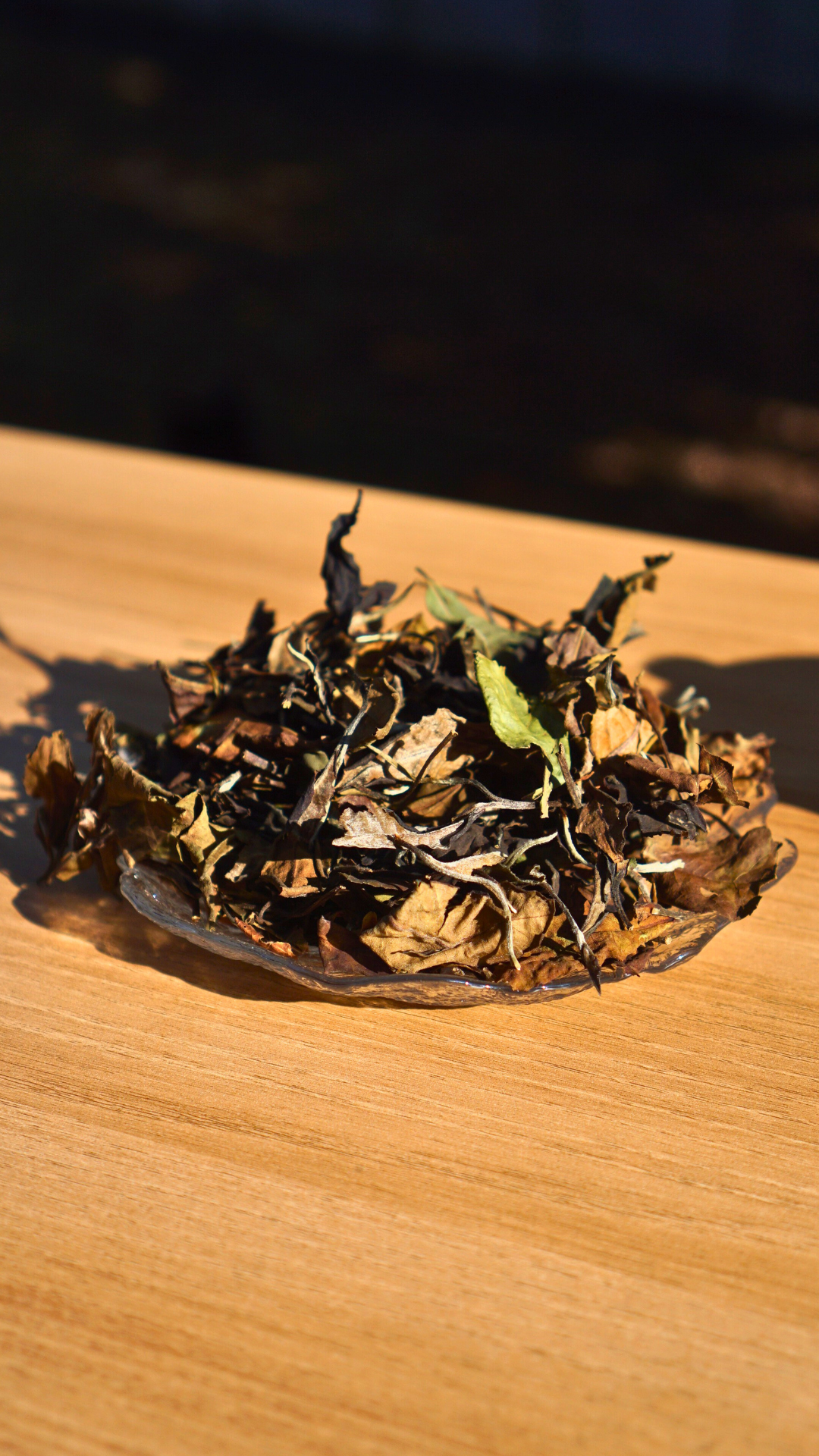
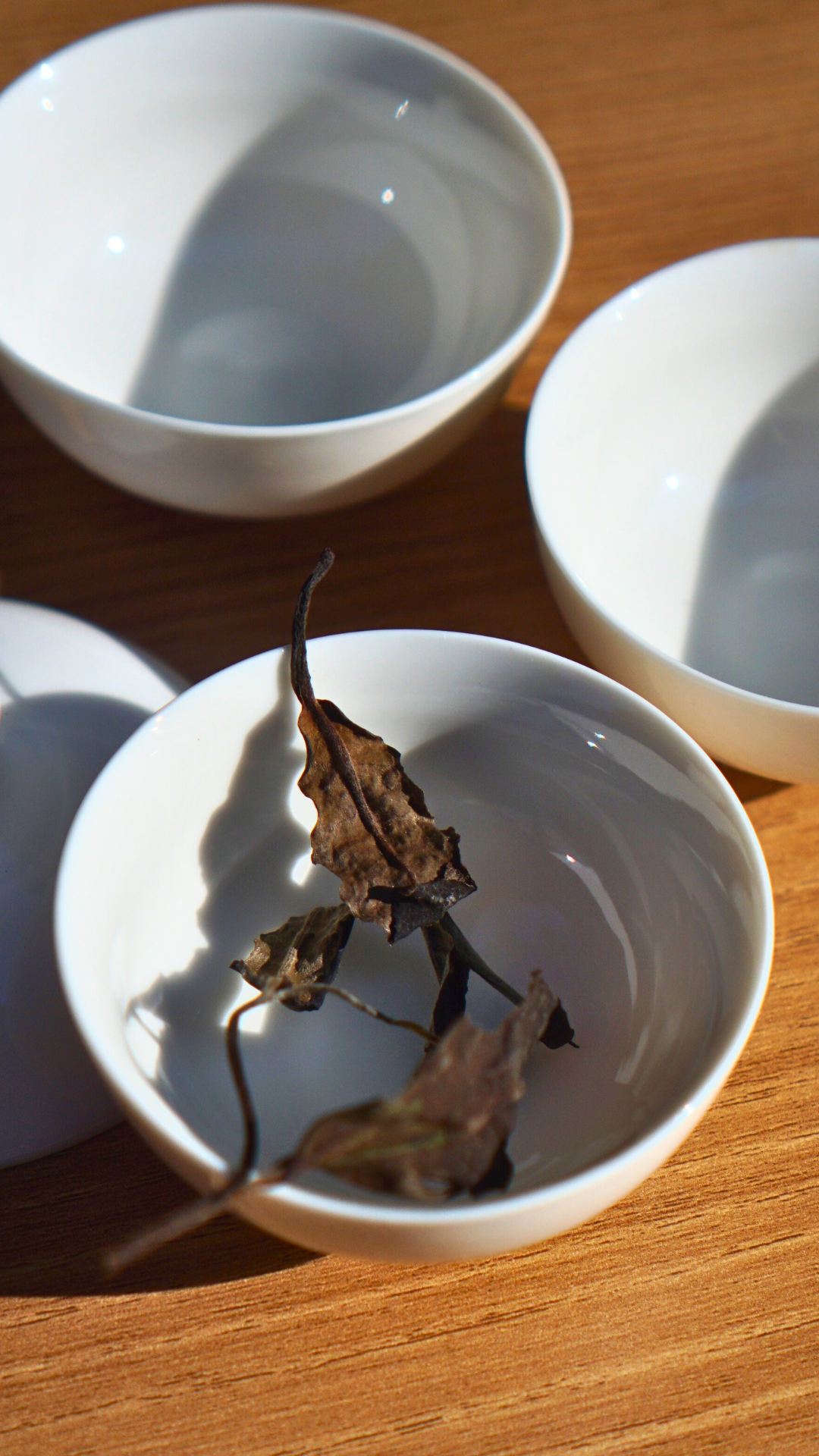
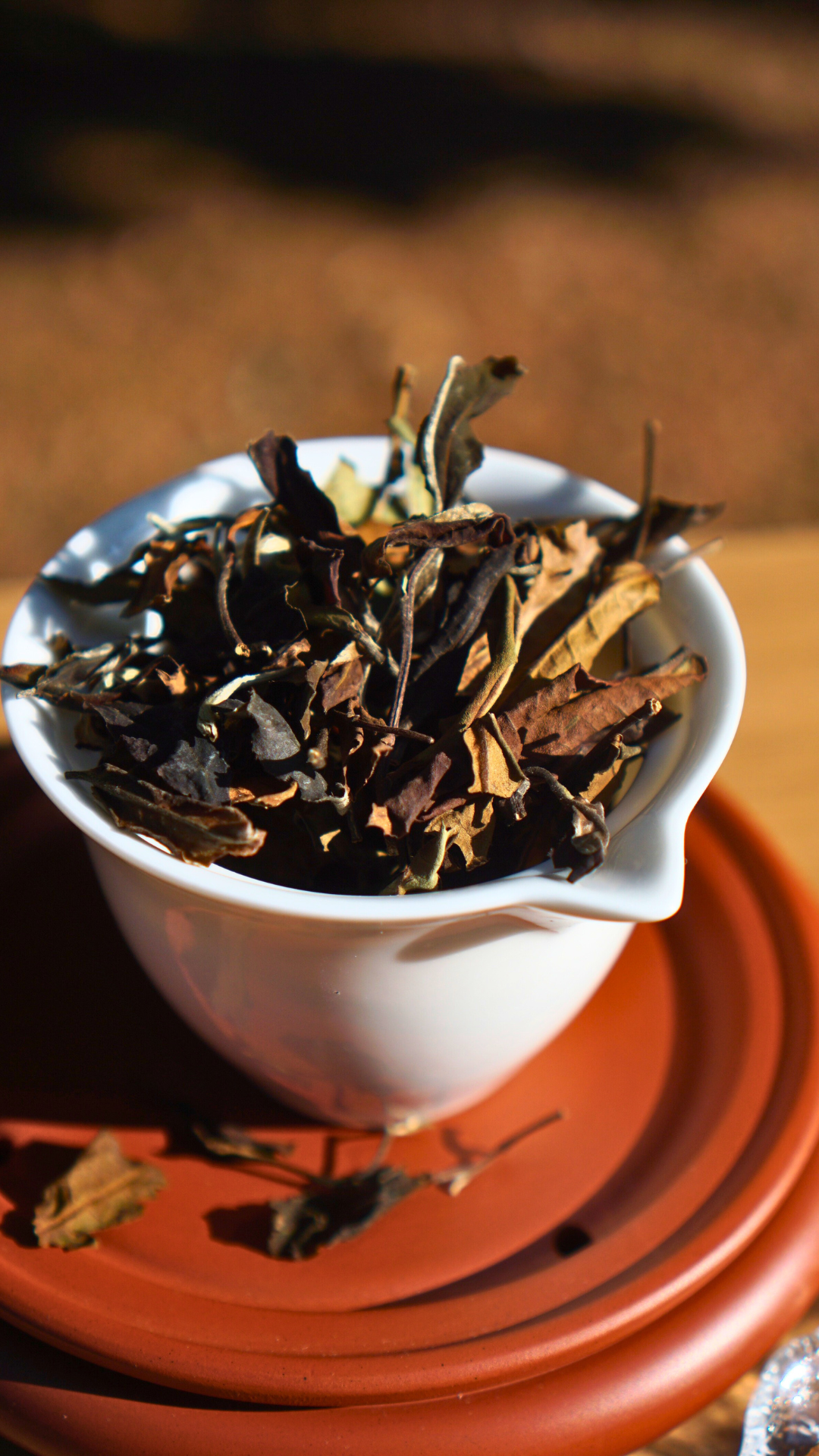
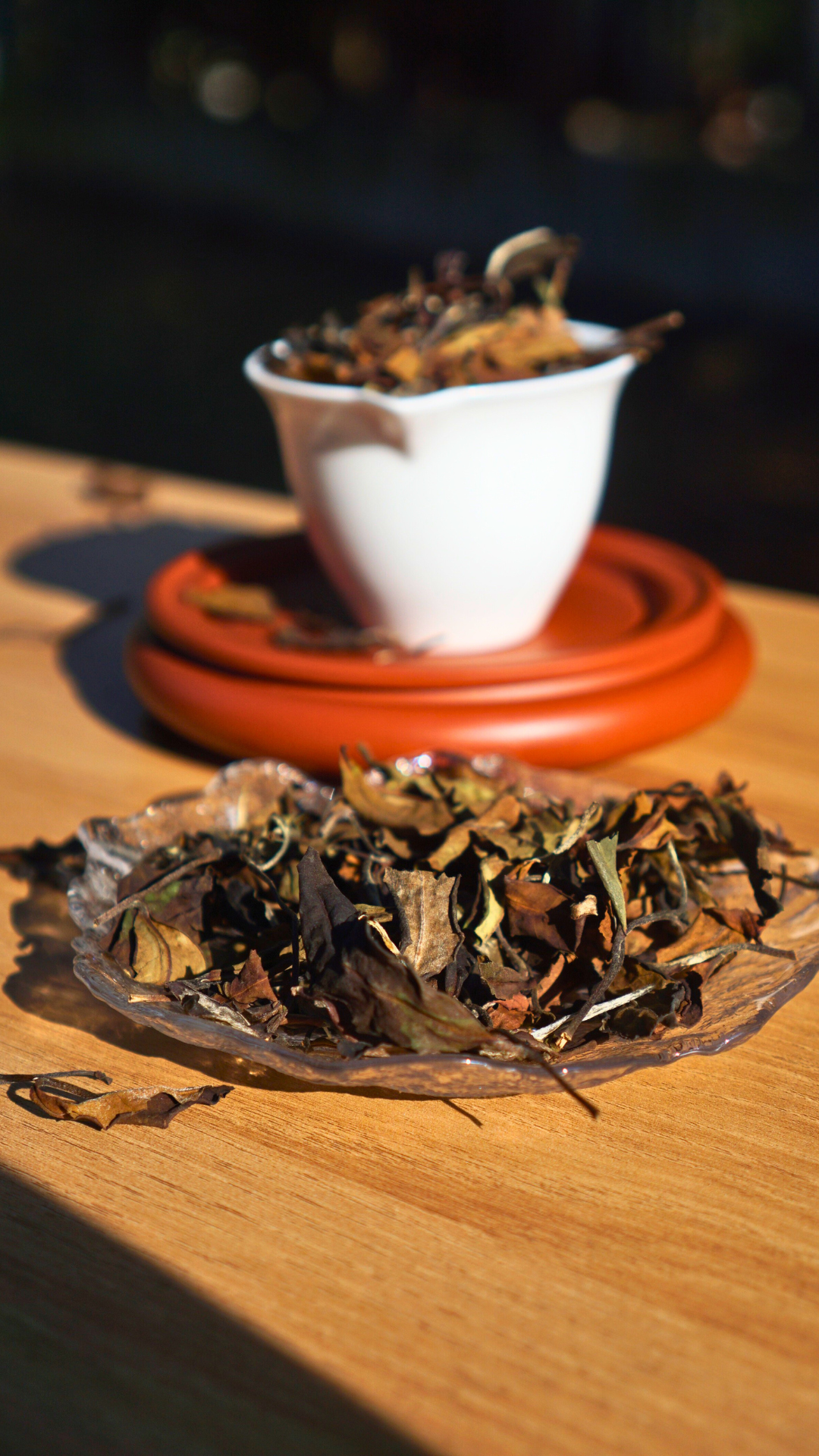
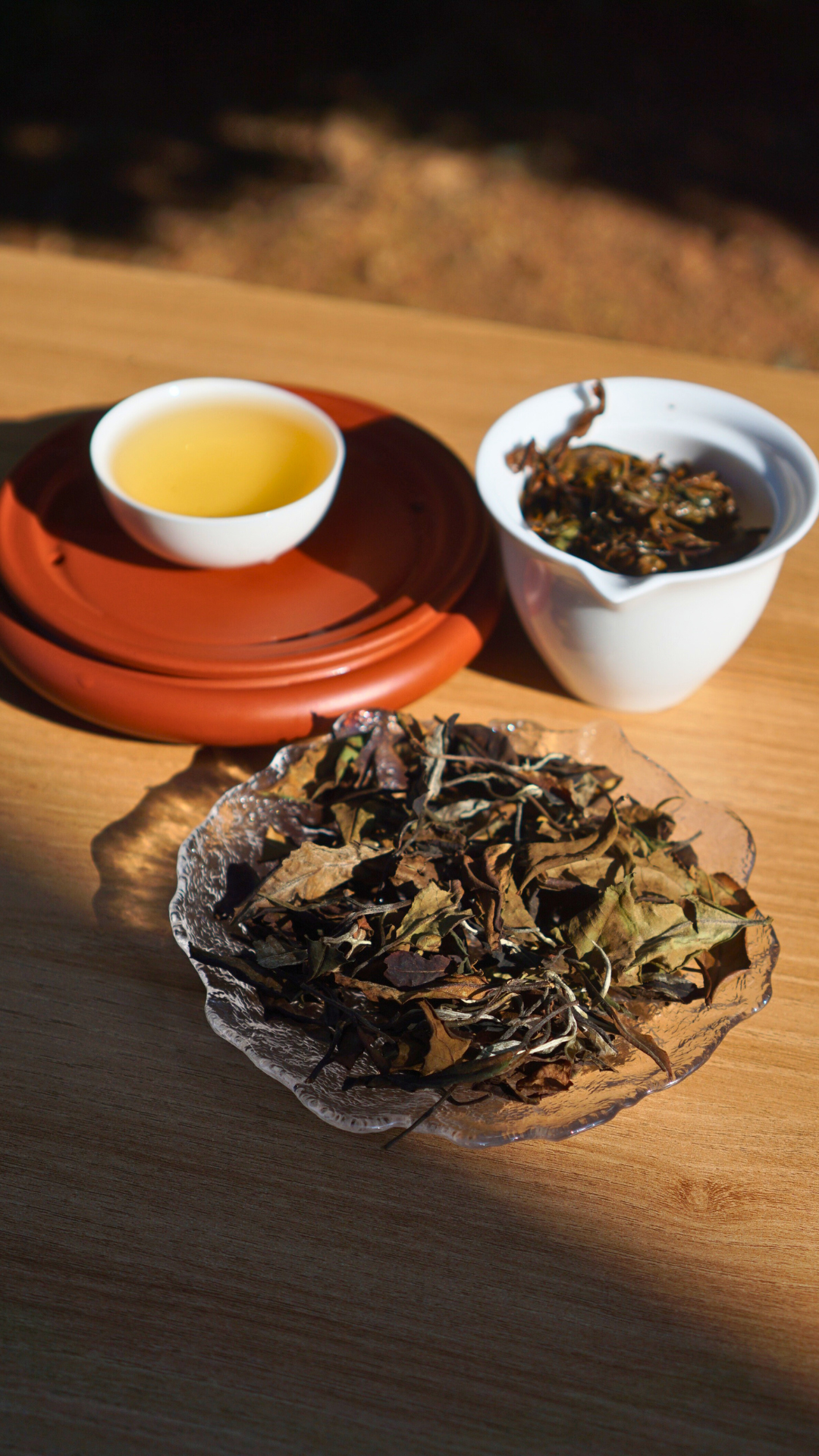
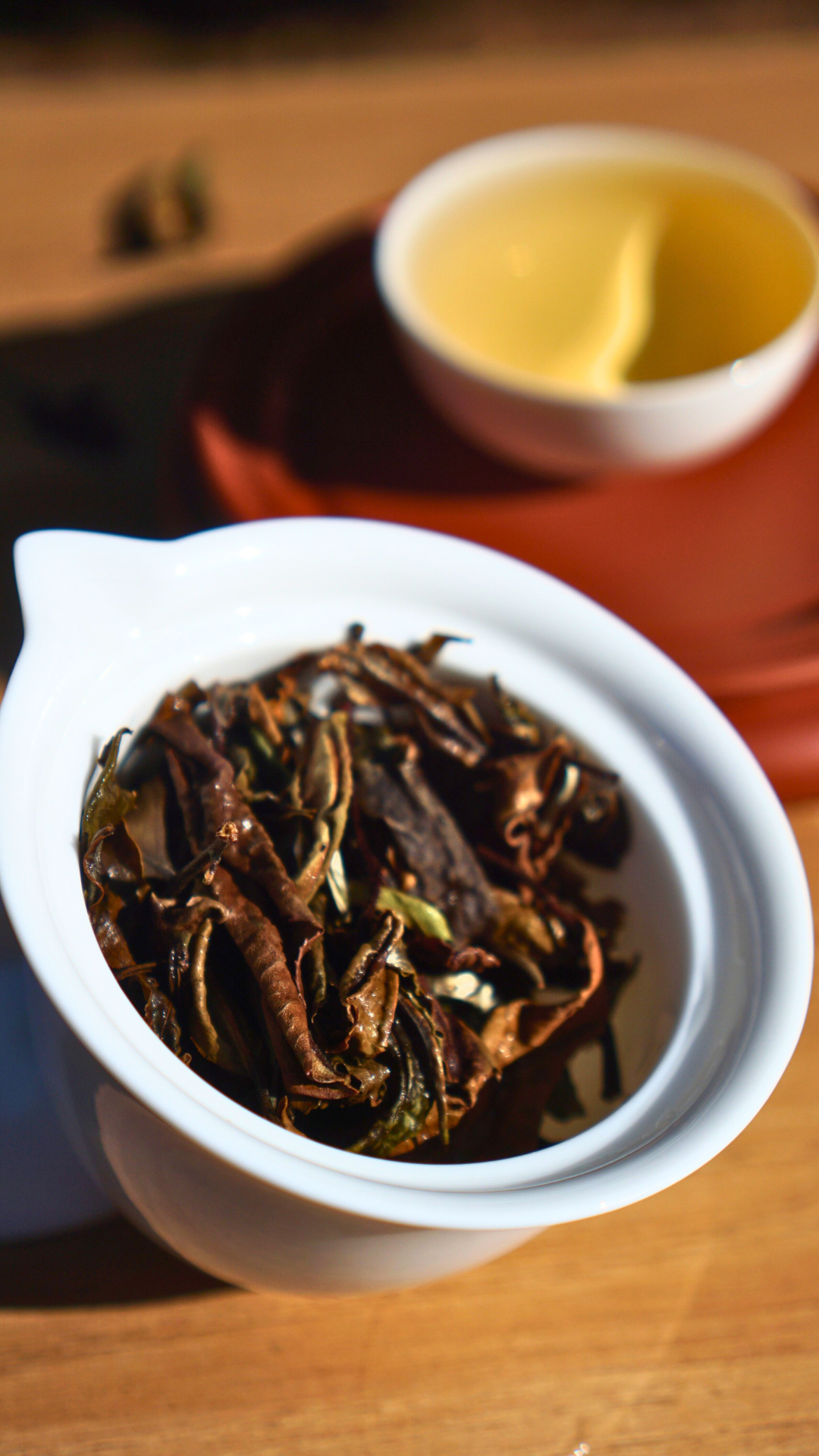
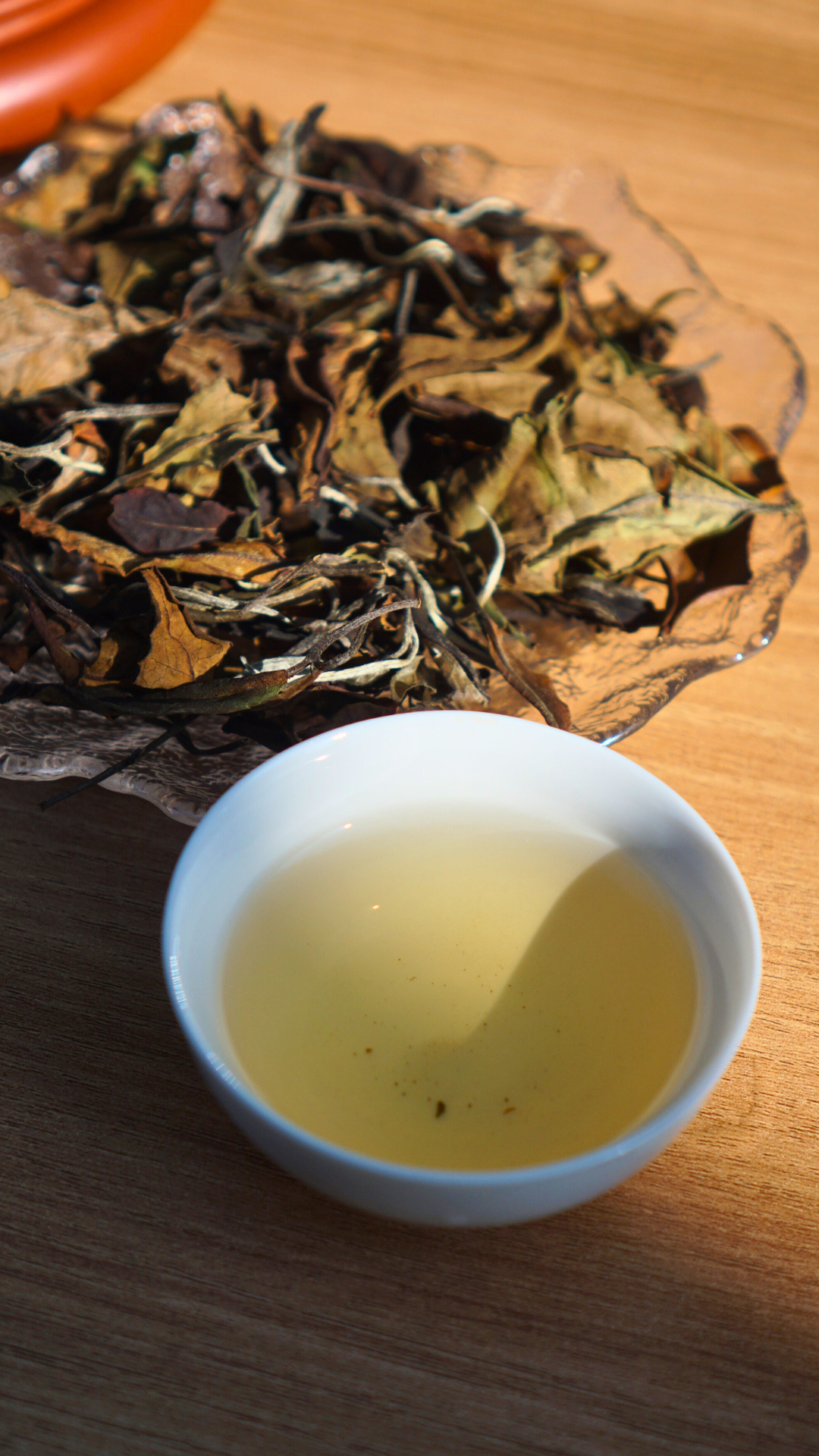
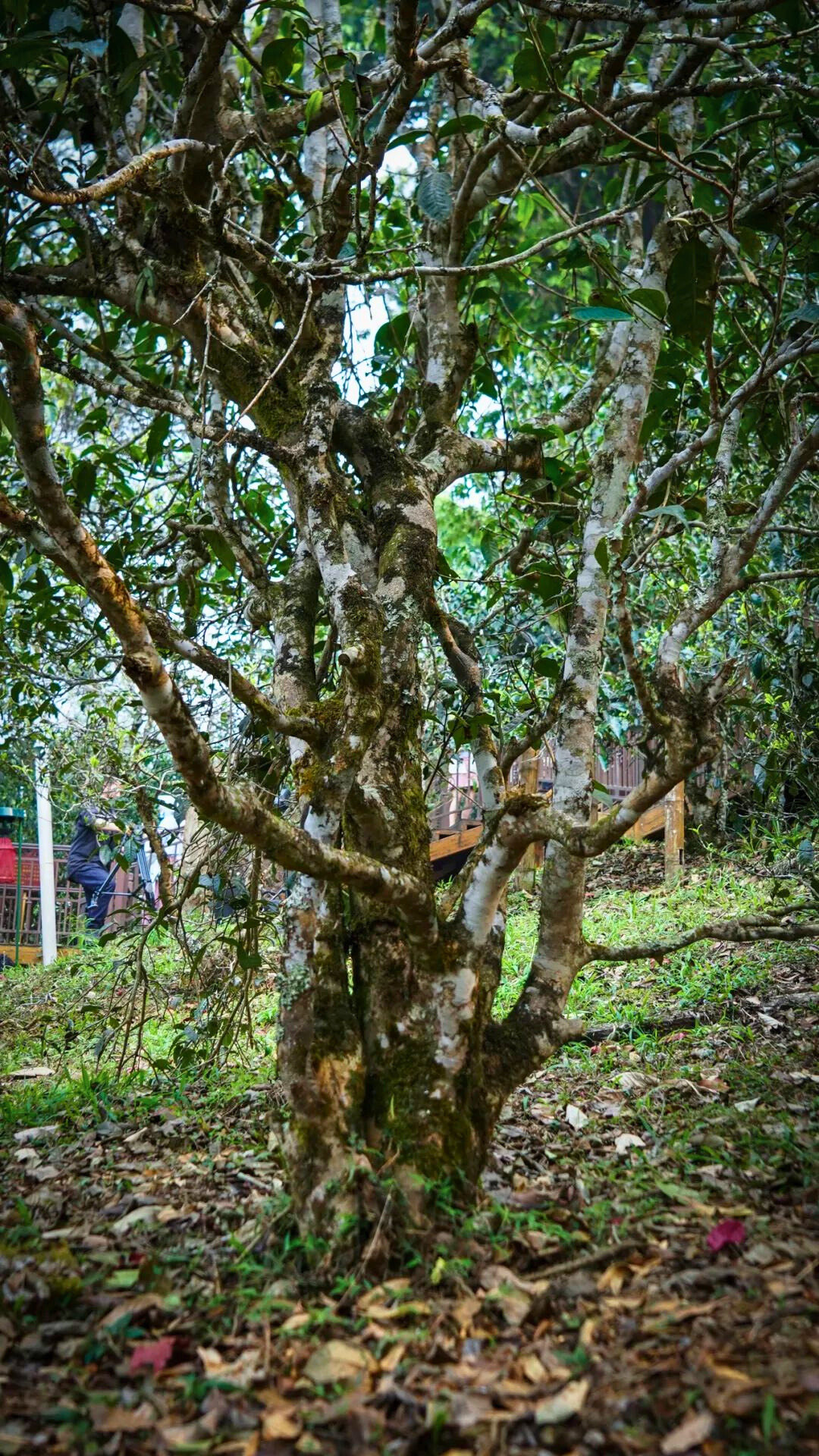
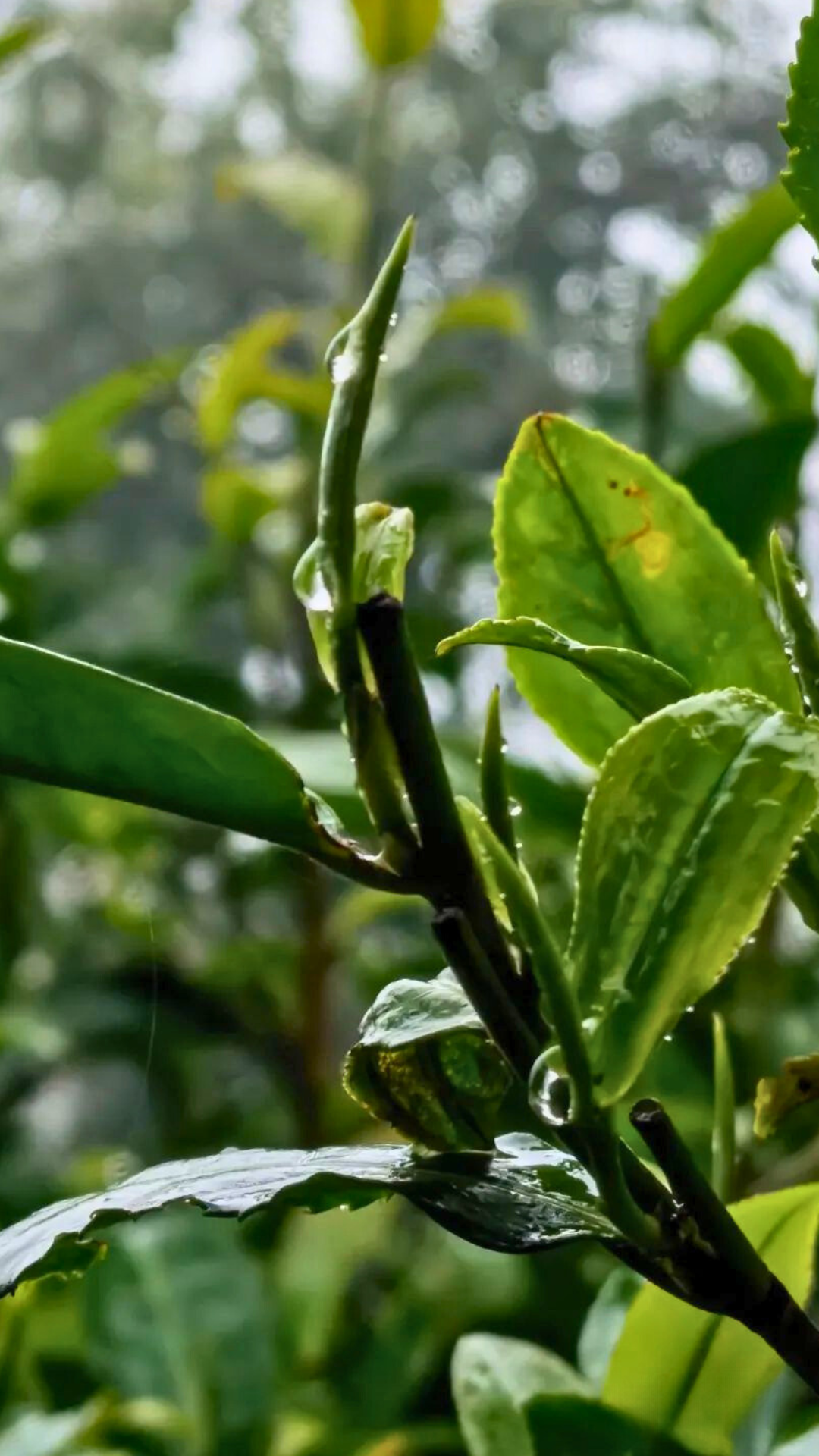
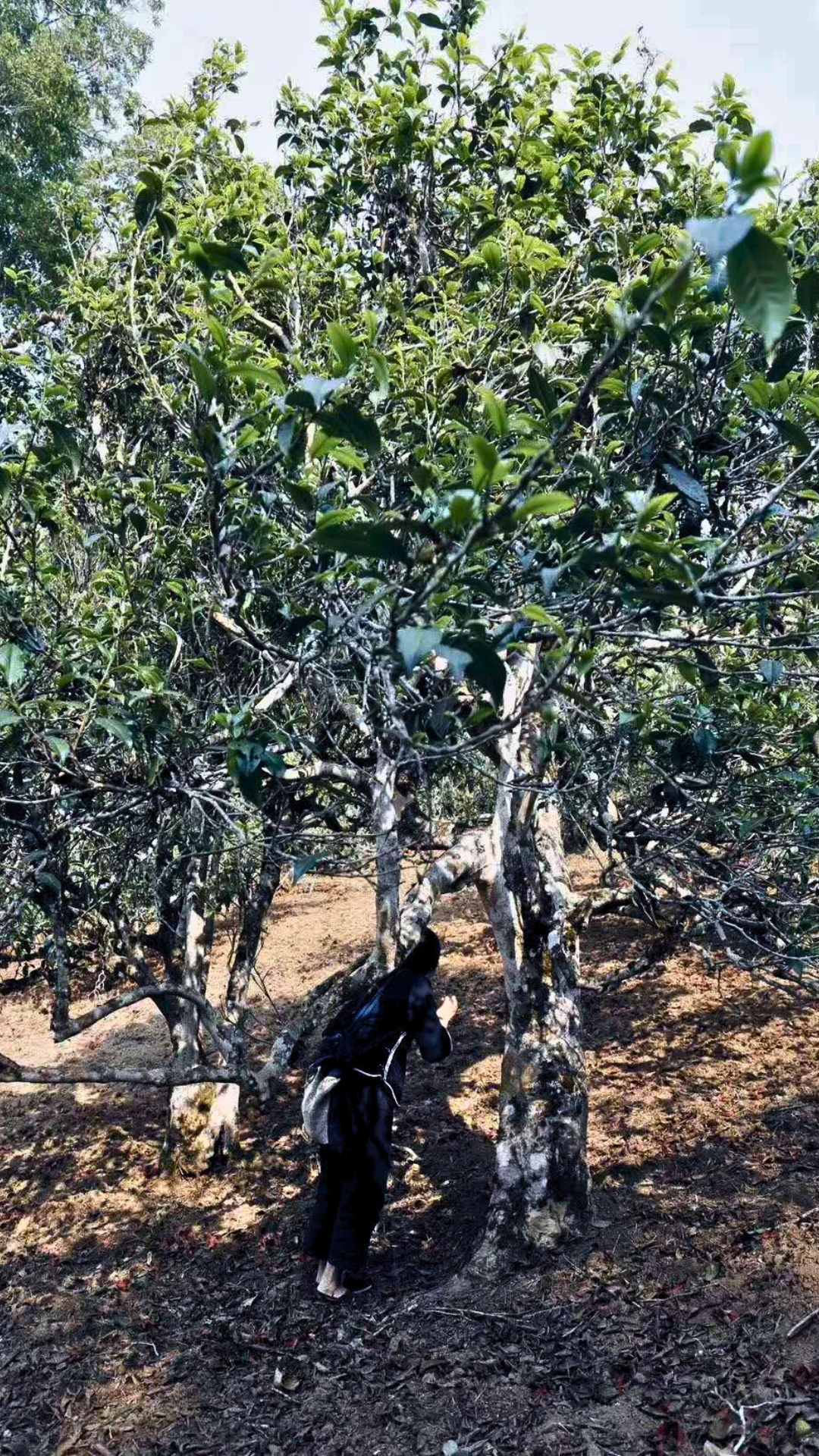
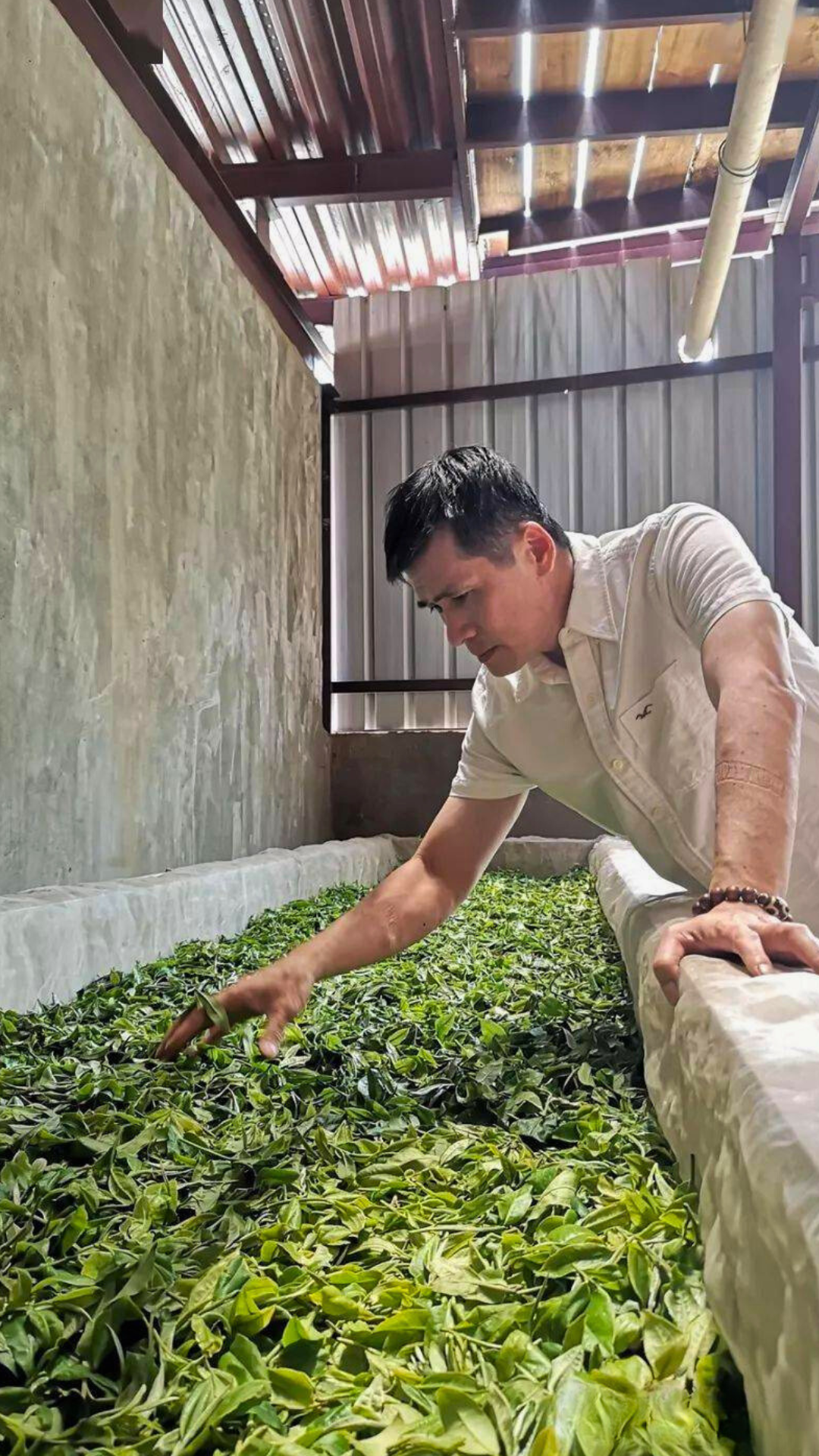
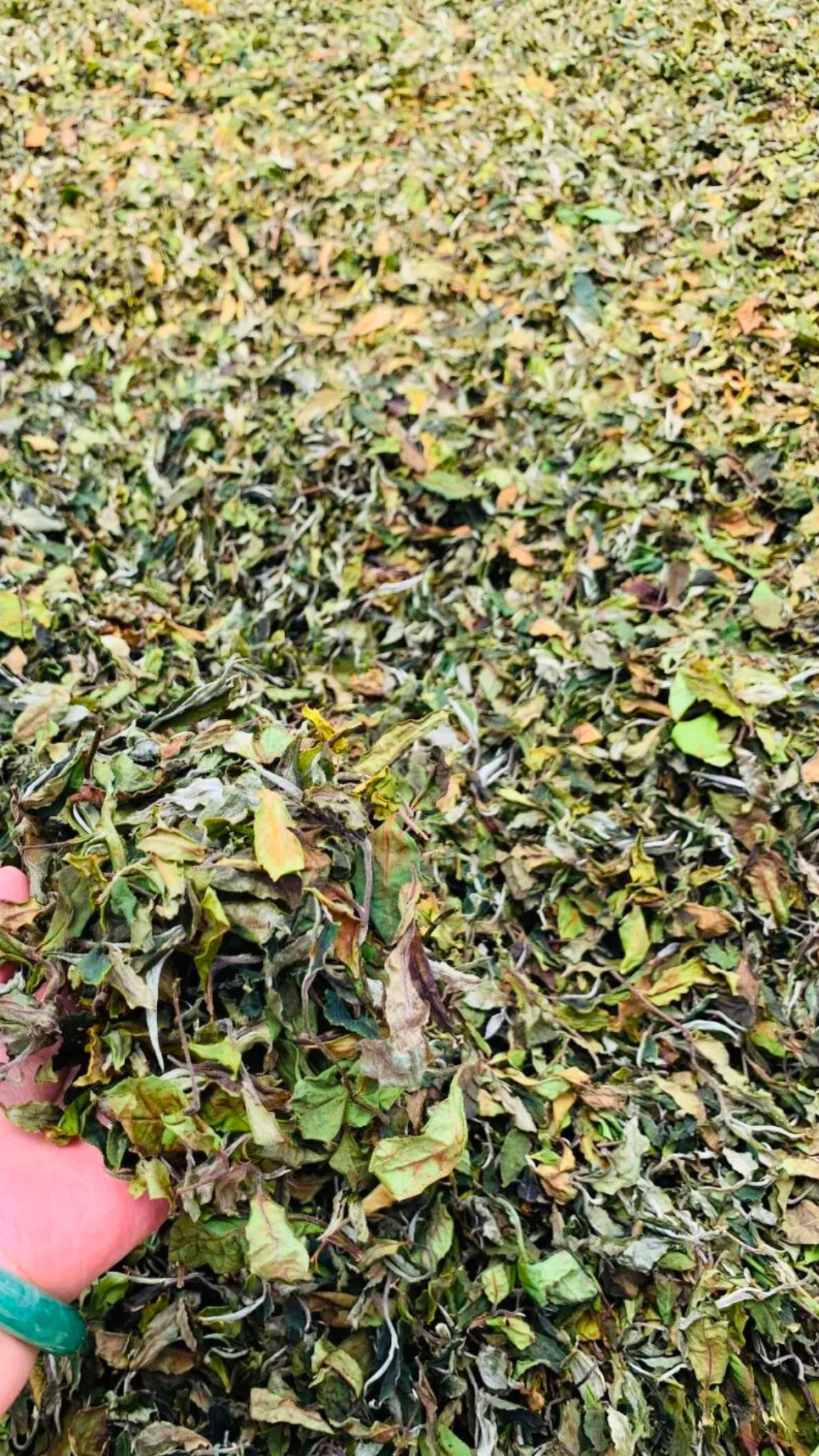
I wasn’t sure what to expect with this type of white tea, but it’s become one of my favorites! The flavor is rich, earthy, and smooth, with a hint of nuttiness and very little bitterness. The brewing process is forgiving too – it holds up to multiple steeps.
이 백차는 정말 맛있습니다. 오래 우리어도 좋고, 처음 두 번 우리면 약초 같은 맛이 나다가, 그 후에는 꽃향기로 변하고, 마지막에는 달콤한 향기가 납니다. 마신 후엔 속이 따뜻하고 매우 편안합니다.
다만 이 차는 보관하기가 매우 어렵습니다. 500그램만 해도 한 봉지가 너무 크고, 정말 보관하기가 힘듭니다. 게다가 차잎이 매우 건조해서 쉽게 부서질 수 있습니다. 이것이 유일한 단점입니다.
We are in communication with the partnered tea factory to prepare some of our large-leaf white tea and raw Pu-erh loose tea into tea balls. This will make them easier to store and more convenient to brew. We plan to gradually launch these tea balls after the Lunar New Year holiday this year.
A warm cup of aged white tea pairs perfectly with a cold winter night. I’m drinking a large-leaf white tea I bought from you a few years ago; it gets more fragrant the longer it’s stored. I bought some again this time, but I’m not sure if it’s the same variety. The new website looks great, keep it up!
Thank you so much! The one you bought from the old store is a Fuding Shou Mei. They are not the same. We will list a Fuding Shoumei soon. This Yunnan large-leaf Shoumei is also very good. It is more durable for storage than Fuding white tea and has a richer flavor. Since you love drinking white tea, I’ve included some samples of other white teas in your package. Give them a try.

